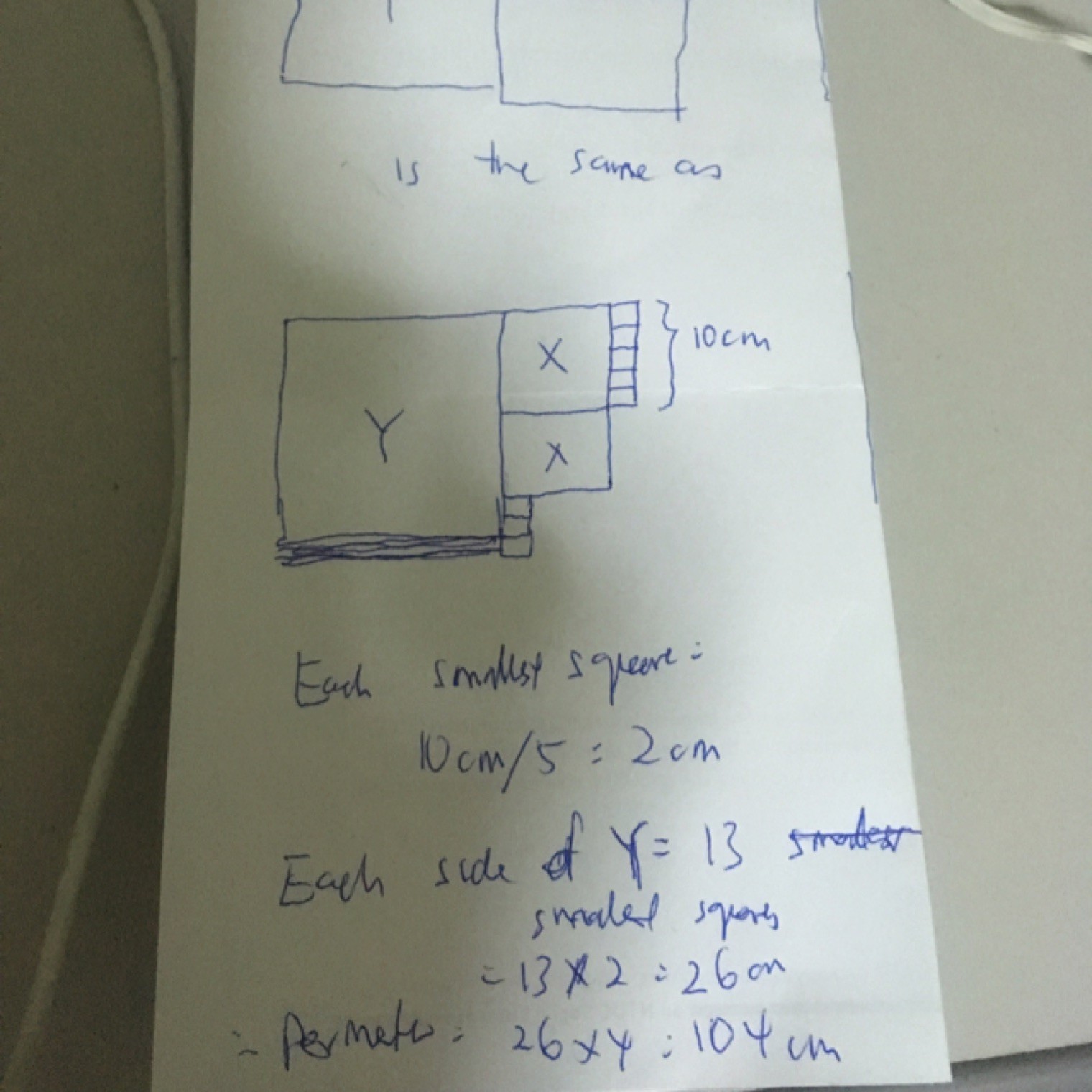Jeffrey Kew's answer to Chan Qiao Ning's Primary 6 Maths question.
done
{{ upvoteCount }} Upvotes
clear
{{ downvoteCount * -1 }} Downvotes
By re-arranging the squares, you will notice each side of X is the same as 5 smallest square. Since X = 5 smallest squares= 10cm, each smallest squares has a side of 2cm.
Similarly, you will notice Y can be represented by the sides of 13 smaller squares (see picture). Since Y = 13 smallest squares (with side of 2cm.see above calc), each side of Y = 26cm.
Therefore, perimeter of Y = 26 x 4 = 104cm
Since
Similarly, you will notice Y can be represented by the sides of 13 smaller squares (see picture). Since Y = 13 smallest squares (with side of 2cm.see above calc), each side of Y = 26cm.
Therefore, perimeter of Y = 26 x 4 = 104cm
Since
Date Posted:
6 years ago

